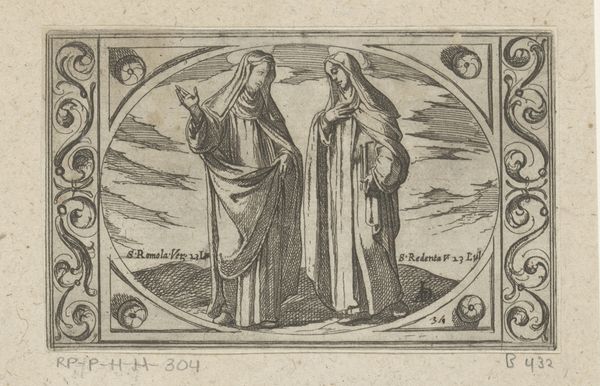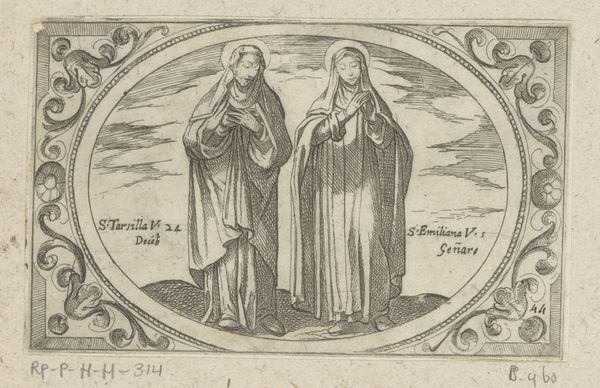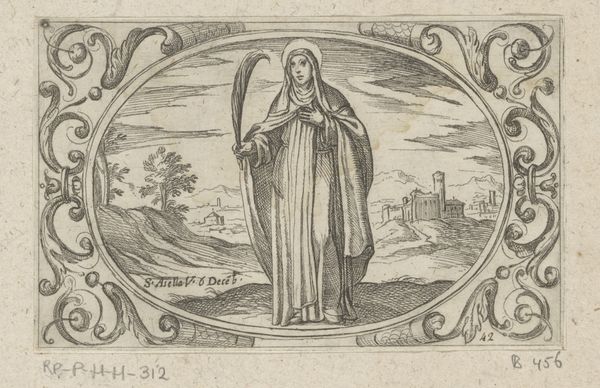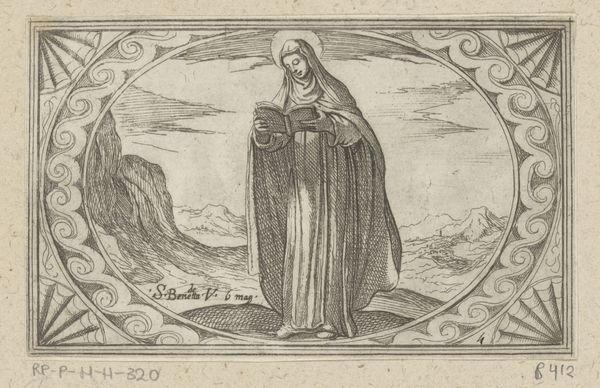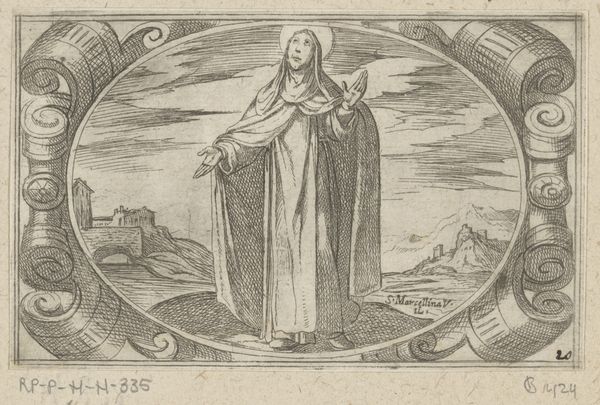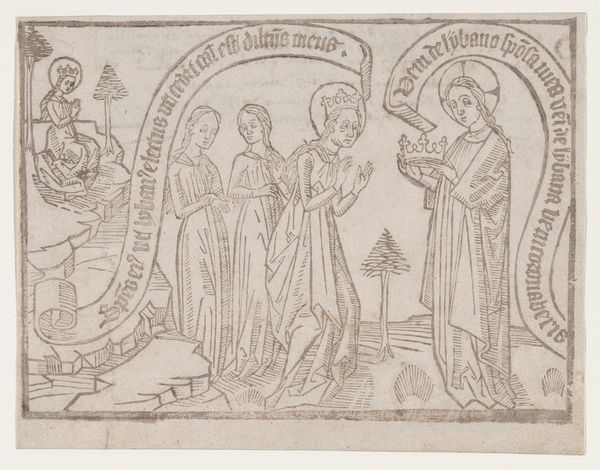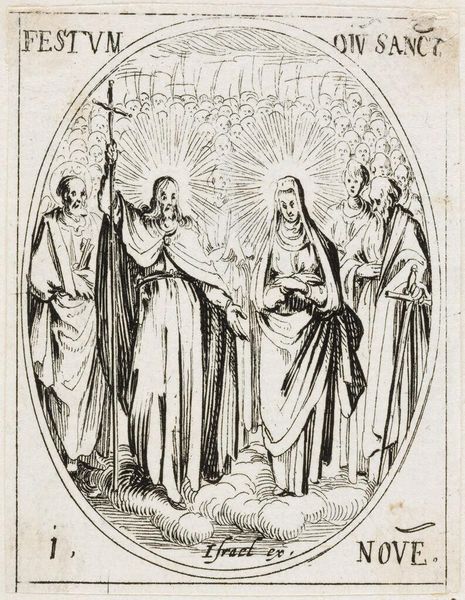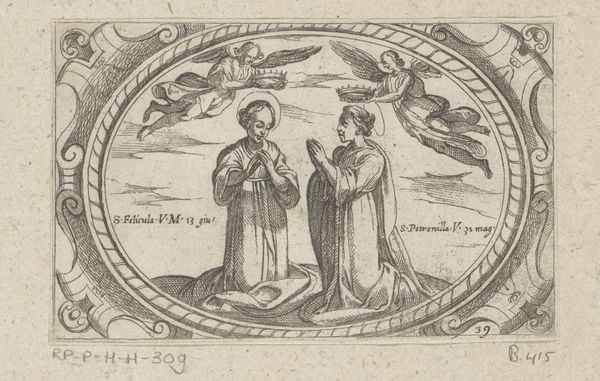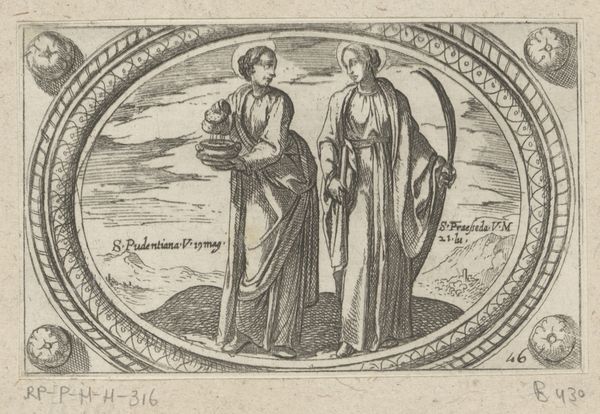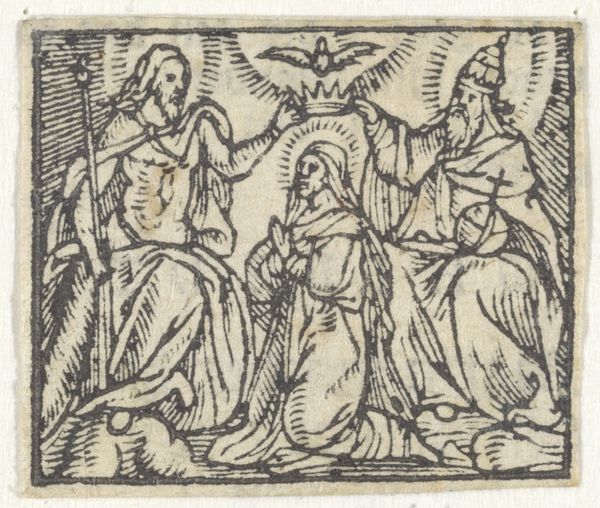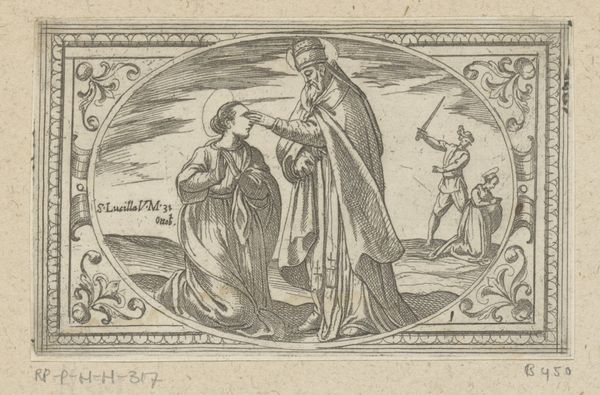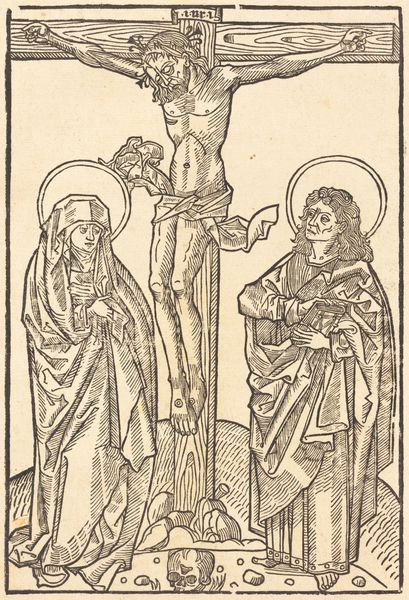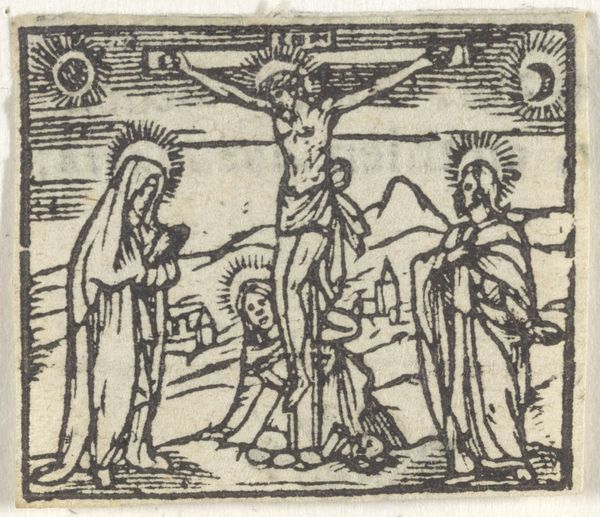
print, intaglio, engraving
#
pen drawing
# print
#
intaglio
#
old engraving style
#
figuration
#
line
#
history-painting
#
italian-renaissance
#
engraving
Dimensions: height 73 mm, width 114 mm
Copyright: Rijks Museum: Open Domain
Curator: Here at the Rijksmuseum, we have an intriguing piece from the Italian Renaissance, attributed to Antonio Tempesta and created sometime between 1565 and 1630. It's an engraving titled "H. Attica, H. Constanza en H. Artemia." Editor: The first thing that strikes me is the composition: three veiled figures, tightly framed within an ornate oval. There's a quiet solemnity about them, despite the decorative border. The monochrome intensifies this, it lends gravity to their representation. Curator: Indeed. Let's delve deeper into the social context. These are three saints, likely venerated in a particular region or order, given the specificity of their names, the artist making a direct link between power structures of religious institutions and those that produce art. Their depiction within the visual culture served a specific purpose within the Catholic Church's outreach, likely during the Counter-Reformation period. Editor: I'm curious about the symbolism they hold. Each carries what appear to be floral or botanical emblems. I think this is a commentary of power being manifested in the hand through symbolical ownership of nature as seen throughout renaissance works. We must ask why this is here; their expressions are demure and soft, yet there is something incredibly violent at the same time in this image. Curator: The medium itself—engraving—played a significant role. As a reproductive technique, it allowed for wider dissemination of images. How the Church co-opted art production is on full display. It allowed these archetypes of pious feminine virtue to be accessed and emulated within different class strata. How did such dissemination work and for what class? These are more pertinent questions than an immediate visual analysis. Editor: Fair point. I find myself dwelling on the formal aspects – the delicate line work, creating textures of the garments, each woman existing as if suspended between worlds of humanly form and iconographical ideal, perhaps to transcend those boundaries... Curator: So, what we're uncovering then, as moderns with different ideas is not merely an object of aesthetic or historical curiosity, but rather a historical artifact embedded within power dynamics, isn’t it? A reflection on representation, reception and religion in the post-renaissance world, for a culture and art form that has continued into today, the 21st century. Editor: Exactly. Engaging with this print forces us to reconsider inherited narratives surrounding virtue, faith, and the complex systems that underpin art creation and consumption. It allows us to question art history itself.
Comments
No comments
Be the first to comment and join the conversation on the ultimate creative platform.
